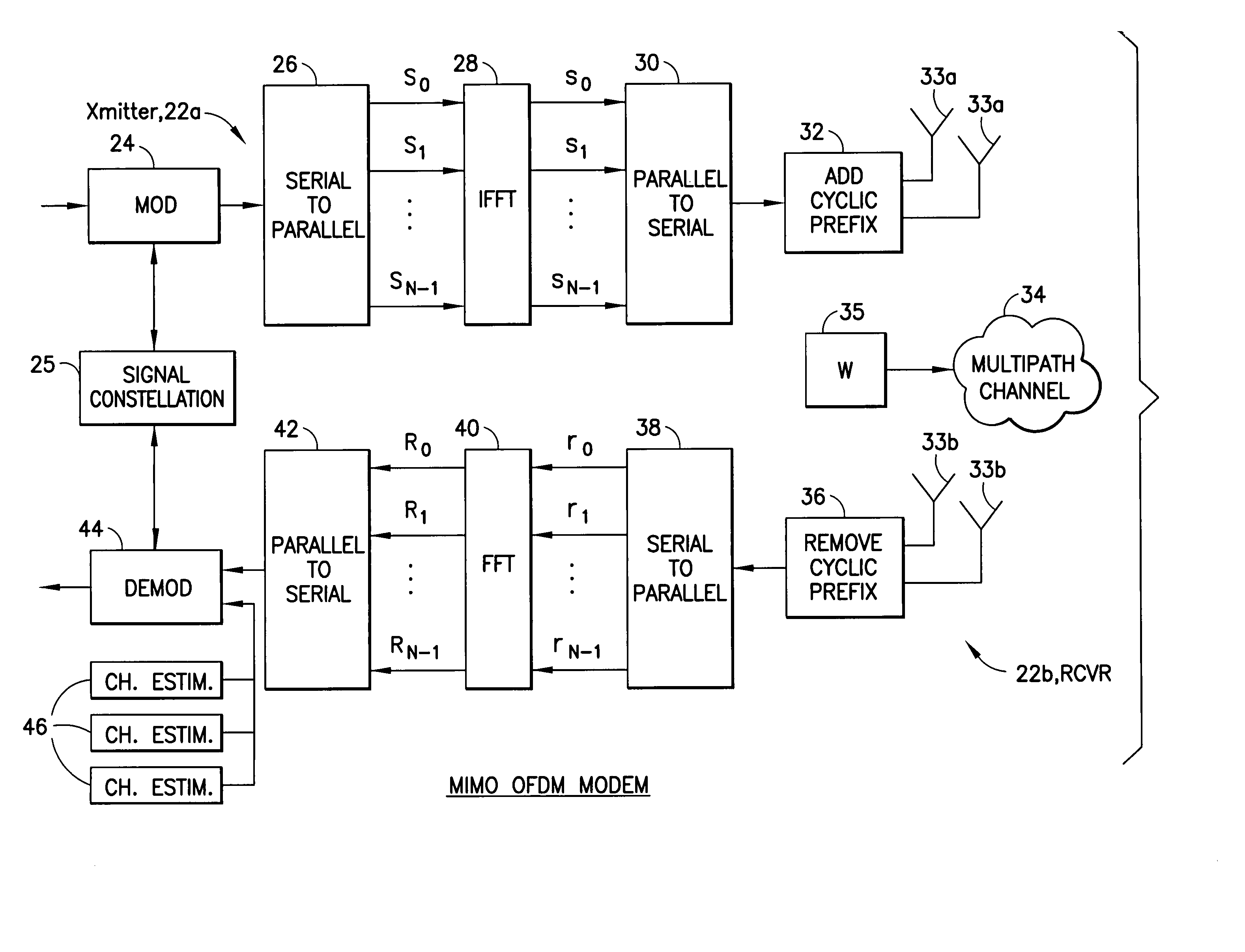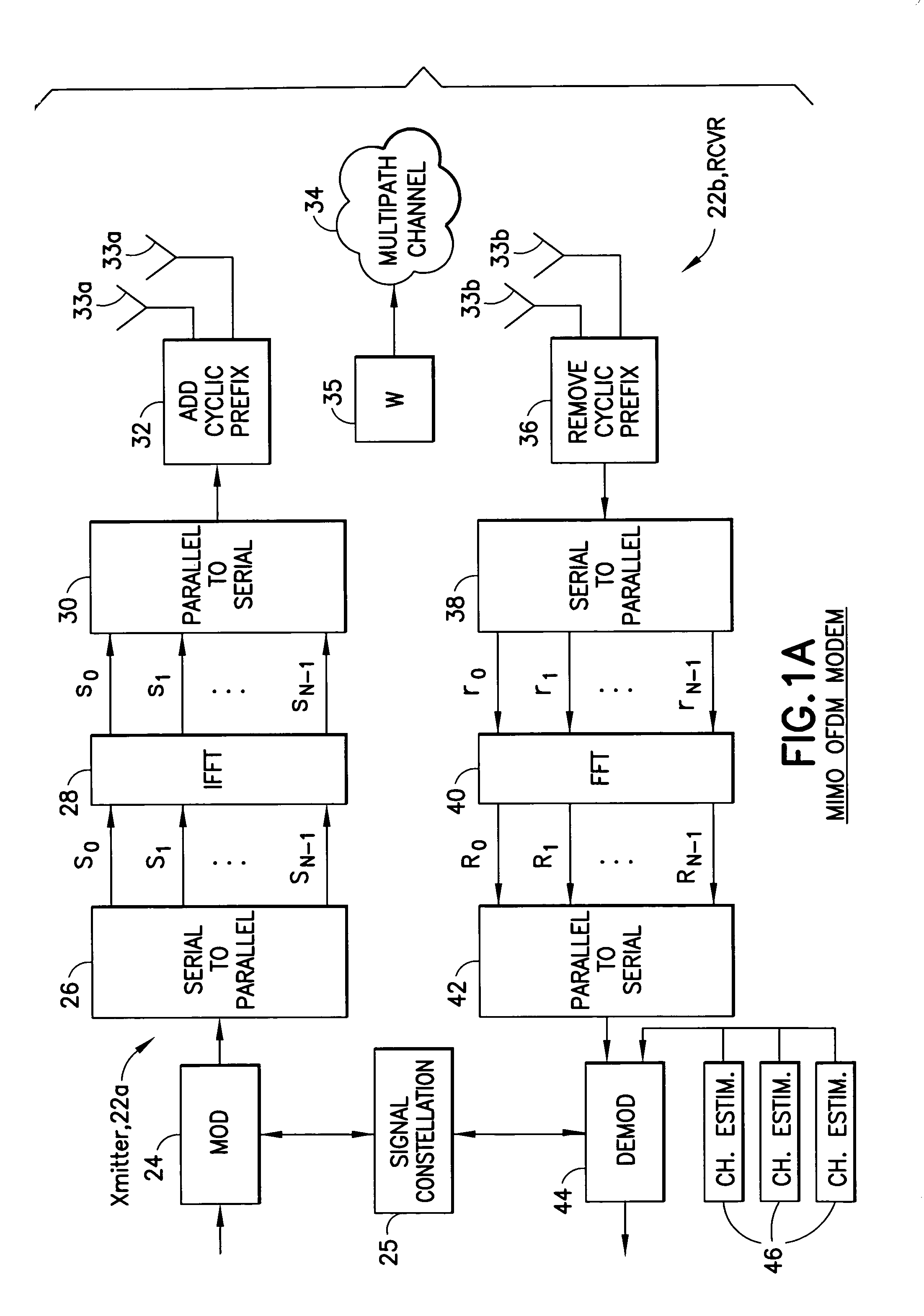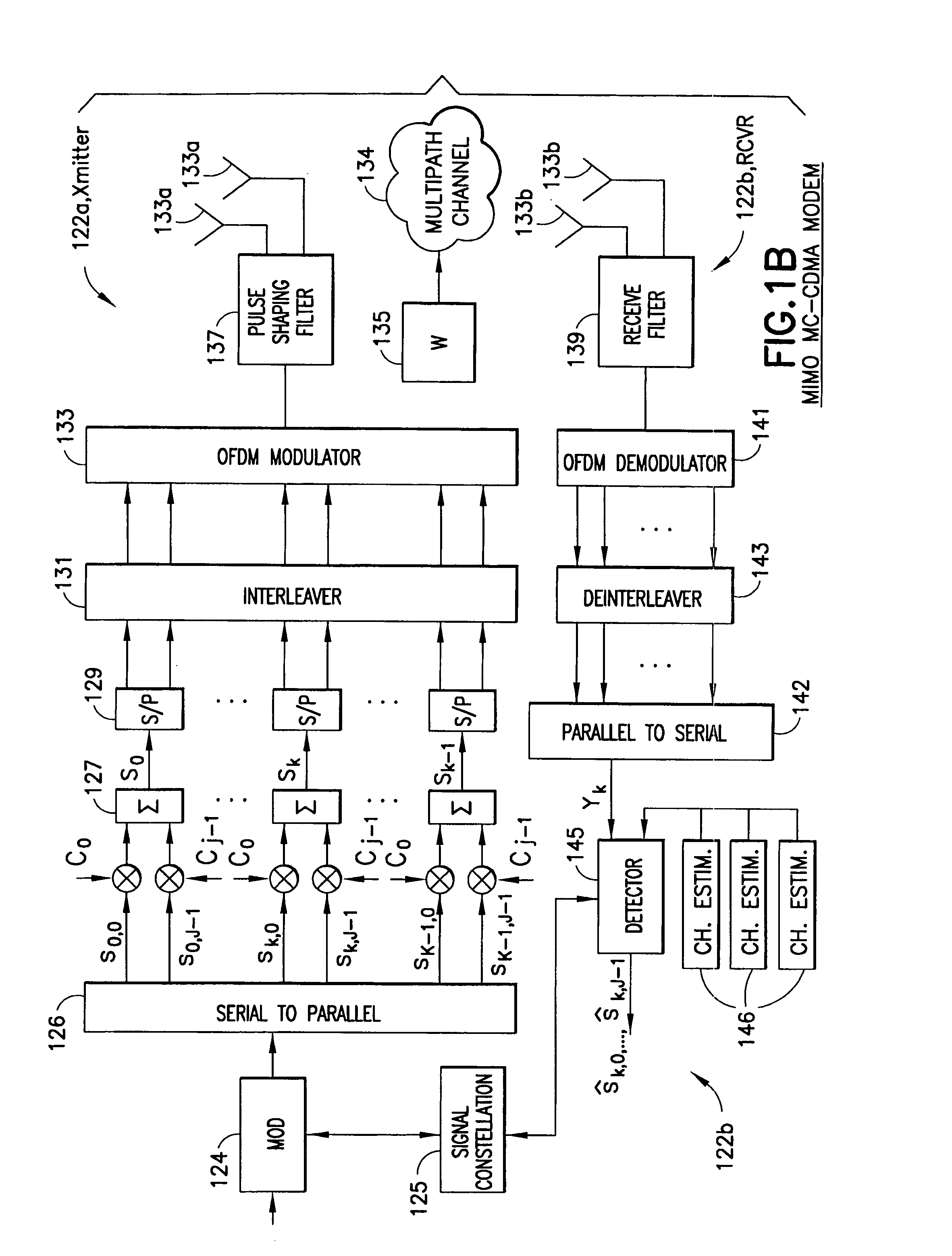Multiple-antenna partially coherent constellations for multi-carrier systems
a constellation and carrier technology, applied in diversity/multi-antenna systems, digital transmission, multi-frequency code systems, etc., can solve the problems of increasing the complexity of detection, reducing the minimum distance between conditional distributions, and reducing the detection complexity.
- Summary
- Abstract
- Description
- Claims
- Application Information
AI Technical Summary
Benefits of technology
Problems solved by technology
Method used
Image
Examples
Embodiment Construction
[0022] While the claimed invention is described below with reference to multi-carrier communications systems and transmitters employing multiple output antennas, a practitioner in the art will recognize the principles of the claimed invention are applicable to other applications including those applications as discussed supra.
[0023] The present invention builds upon work detailed in International Patent Application PCT / IB03 / 02088, filed with the U.S. Receiving office on May 29, 2003 and entitled “METHOD AND APPARATUS TO ESTABLISH CONSTELLATIONS FOR IMPERFECT CHANNEL STATE INFORMATION AT A RECEIVER”. That work described signal constellations wherein the individual constellation points were separated by a distance determined from conditional distributions, such as a Kullback-Leibler (KL) distance. Co-pending U.S. patent application Ser. No. 10 / 607,406, filed on Jun. 25, 2003 and entitled “SIGNAL CONSTELLATIONS FOR MULTI-CARRIER SYSTEMS”, details partially coherent signal constellatio...
PUM
 Login to View More
Login to View More Abstract
Description
Claims
Application Information
 Login to View More
Login to View More - R&D
- Intellectual Property
- Life Sciences
- Materials
- Tech Scout
- Unparalleled Data Quality
- Higher Quality Content
- 60% Fewer Hallucinations
Browse by: Latest US Patents, China's latest patents, Technical Efficacy Thesaurus, Application Domain, Technology Topic, Popular Technical Reports.
© 2025 PatSnap. All rights reserved.Legal|Privacy policy|Modern Slavery Act Transparency Statement|Sitemap|About US| Contact US: help@patsnap.com



